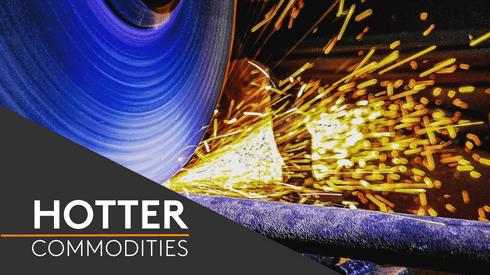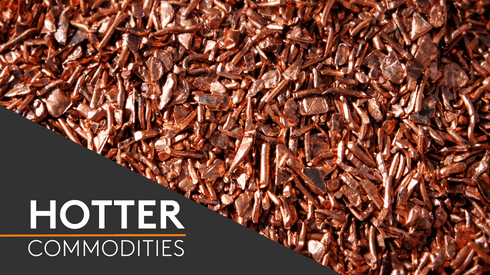Finding a bottom
Market participants expected to see fierce competition in buying spot copper concentrates given the increase in supply disruptions and new smelting projects coming online in Asia, but the swift decline in spot TC/RCs is beyond most market expectations, sources told Fastmarkets.
TC/RCs are discounts to the exchange’s copper prices, and the numbers usually decline when supplies are tight.
Fastmarkets calculated the weekly copper concentrates TC index, cif Asia Pacific at $12.70 per tonne per tonne on March 1, down from $19.80 per tonne on February 23 and marking its lowest level since Fastmarkets began tracking the market in June 2013.
This week’s index is massively down compared with the 2024 benchmark of $80 per tonne, agreed between Chilean miner Antofagasta and China’s Jinchuan Group in November 2023.
Talk to us about our copper market analysis and price data.
“Honestly speaking, the current spot TC level in the $10s [per tonne] is already below my expectation of the $20s and $30s [per tonne], and I believe I’m not in the minority. And now what is starling is almost no smelters are well covered with enough copper concentrates supplies, which is making the decline in spot TCs seemingly unstoppable,” one source said.
A second source echoed that view and said the supply tightness in copper concentrates followed a series of unexpected supply disruptions from copper mines starting with the closure of First Quantum’s Cobre Panama mine in November. But the second source said that there was now less downward pressure on spot TCs because more traders are willing to sign supply contracts with smelters.
“[Big] traders are more willing to begin supply talks with Chinese smelters, some of which began before the Lunar New Year holiday, after TCs fell to around the $20s [per tonne], with some already inking the deals, and this will help alleviate spot TC downward pressures,” the second source said.
And a third source said there was a strong possibility that spot TCs would fall into single digits or even turn negative due to “sustained” supply shortages, especially given the new projects coming online in China and India.
“But that will be unsustainable, and any rebound room will be also limited against the supply deficit picture of the copper concentrate market,” the third source said.
Fastmarkets researchers expected to see a deficit of around 300,000 tonnes of copper concentrate for 2024 overall, and forecast the spot TC index averaging $26 per tonne for the full year – revised down from a previous forecast for an annual average of $37 per tonne, according to Fastmarkets copper analyst Andrew Cole.
Stopping the decline
The decline in spot TC/RCs slowed down briefly in late January after China’s Copper Smelters Purchase Team (CSPT) held an urgent meeting calling for bringing forward unit maintenance or cutting production, to combat the slump in spot TCs.
But, the market resumed its quick decline from late February amid brisk spot buying, despite the upcoming maintenance season at domestic copper smelters in the second quarter of 2024, Fastmarkets learned.
“If there are shipment delays, bringing unit maintenance will be helpful, with smelters able to ‘wait’ for the materials, but the problem now is there is not [supply that is] ‘delayed,’ it’s ‘supply loss’ following unexpected mine supply disruptions and output downgrading at some key miners, leaving the supply deficit structure intact,” a fourth source said, explaining that smelters cutting or suspending production may be one “effective” way to stop the tumble in spot TCs, which can reduce demand for the feedstock.
However, it’s not an “easy” decision for every smelter to make for their production plans, some participants said.
“[I’m sure] smelters have done their own calculation on input costs from surging raw materials prices, but it will never be as simple as a mathematics issue, because you have other key metrics for consideration; for example, a smelter can’t get loans from banks if it suspends production, and also, many copper smelters [in China] are usually a pillar for local economic growth, which makes [production cuts or a suspension decision] much more complicated,” a fifth source said.
But some participants said production cuts or suspension will finally happen at smelters, especially those with high reliance on spot units and insufficient cash liquidity, and large-scale production cuts may happen if the government or the domestic non-ferrous industry association calls for production reduction if conditions in all fronts, including TCs, demand for copper cathodes, the sulfuric acid market and arbitrage terms, remain unfavorable.
Chinese copper consumers are continuing to digest copper inventories piled up around the country’s Lunar New Year holiday, muting demand for imported copper cathodes with prompt arrivals, but more business was concluded for units due for arrivals in mid-late March and onward, Fastmarkets learned.
Fastmarkets assessed the benchmark daily copper grade A cathode premium, cif Shanghai at $50-65 per tonne on Wednesday March 6, up from $45-62 per tonne a day earlier.
Sulfuric acid, a byproduct of smelting copper, lead and zinc, is a key source of profit for these smelters. Weak prices in China’s domestic sulfuric acid market eroded profits at these smelters in 2023, but recently the market is showing signs of a rebound amid increased buying.
Other key implications
In the short term, copper smelters are struggling, looking for feedstocks for their production at extremely low spot TCs, and the raw material tightness issue will continue in the coming years due to the limited growth of global copper mine output and new smelting projects in the pipeline. Some participants said that this will bring a new reshuffle of copper smelters, with incompetent ones being phased out among fierce competition.
“It’s just the beginning of ‘testing’ for every smelter, and they will try everything to reduce costs and increase efficiency for a new break-even point, and those smelters with insufficient liquidity and high operating costs are at risk of being closed or merged finally,” a sixth source said.
The sixth source continued: “[Enterprises] in every sector will be operating without profits for a long term, and now the market is looking for a new ‘balance,’ and it now comes very painfully.”
In the longer term, the challenges facing copper smelters will be felt through the whole industry, impacting investment in the longer term, market participants said.
“Now, suppliers can easily sell their [copper concentrates] at a very good [price], but they will run into roadblocks when if their buyers can’t afford [their cargoes] and close their furnaces. People will also be reluctant to invest when parts the supply chain struggle to operate due to a lack of sustainability, which will affect development in the long-run,” a seventh source said.
Find out more about out market-reflective copper price data spanning the copper supply chain, from copper concentrates and copper wire to copper scrap. Talk to us.






